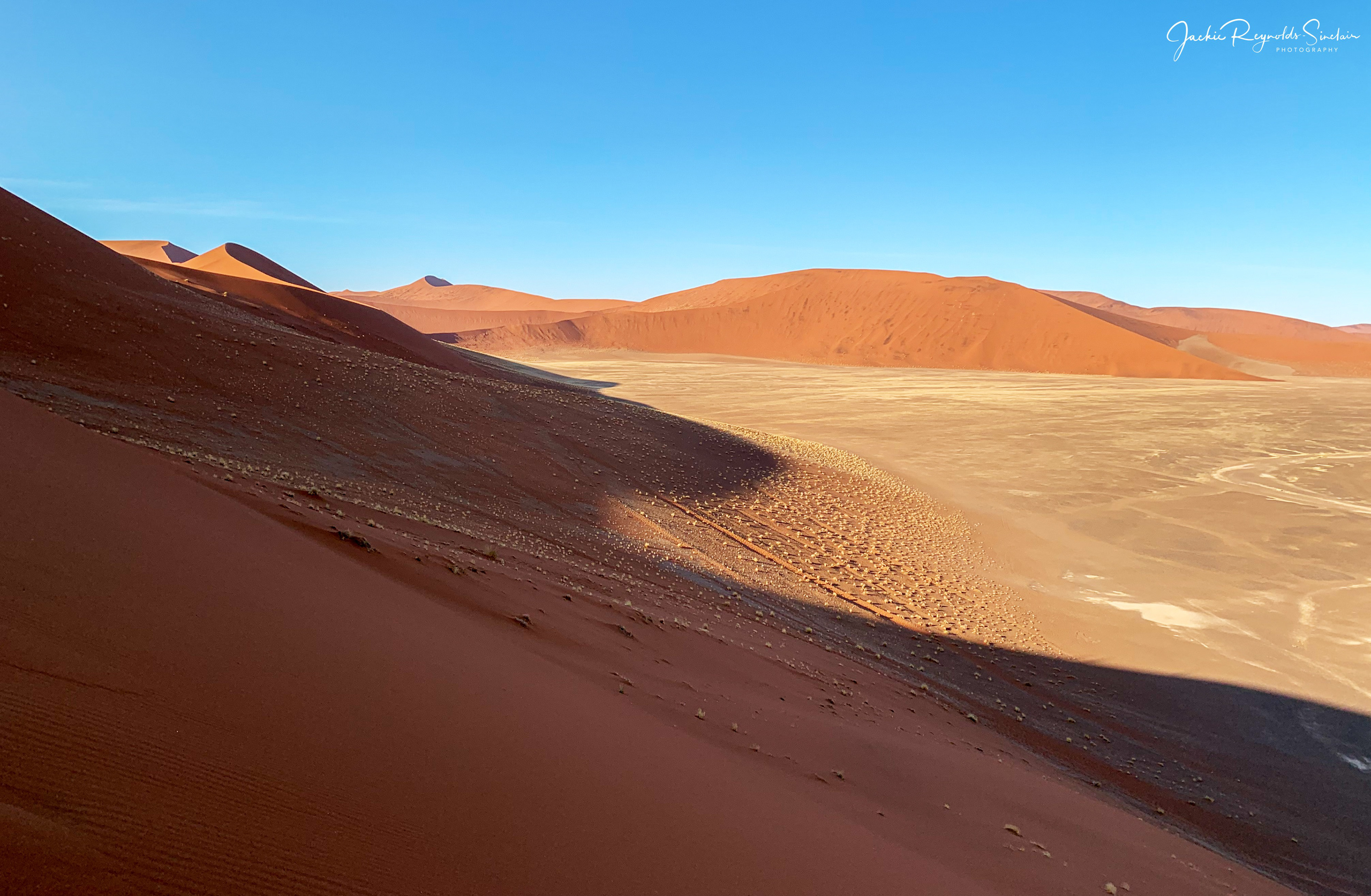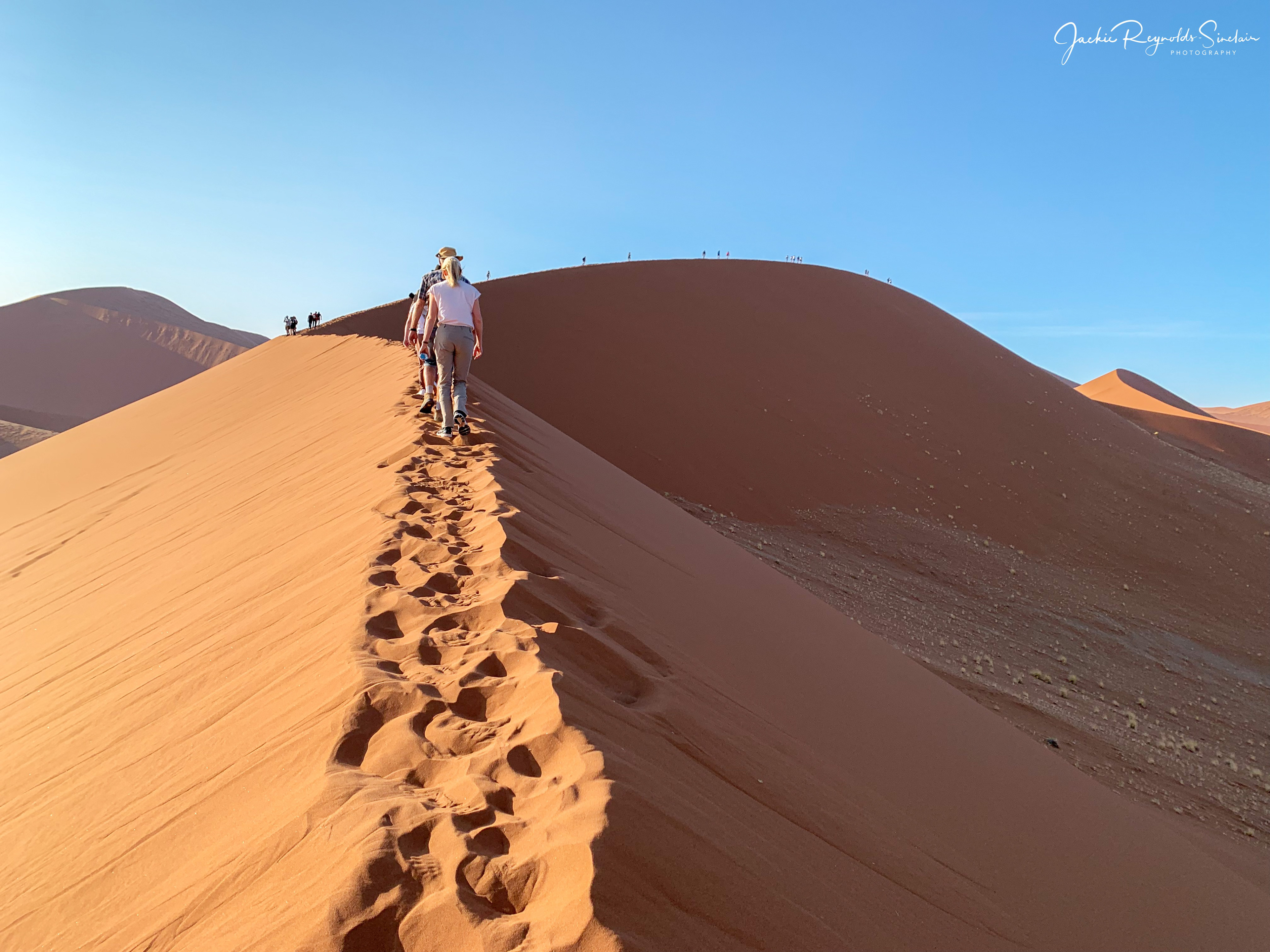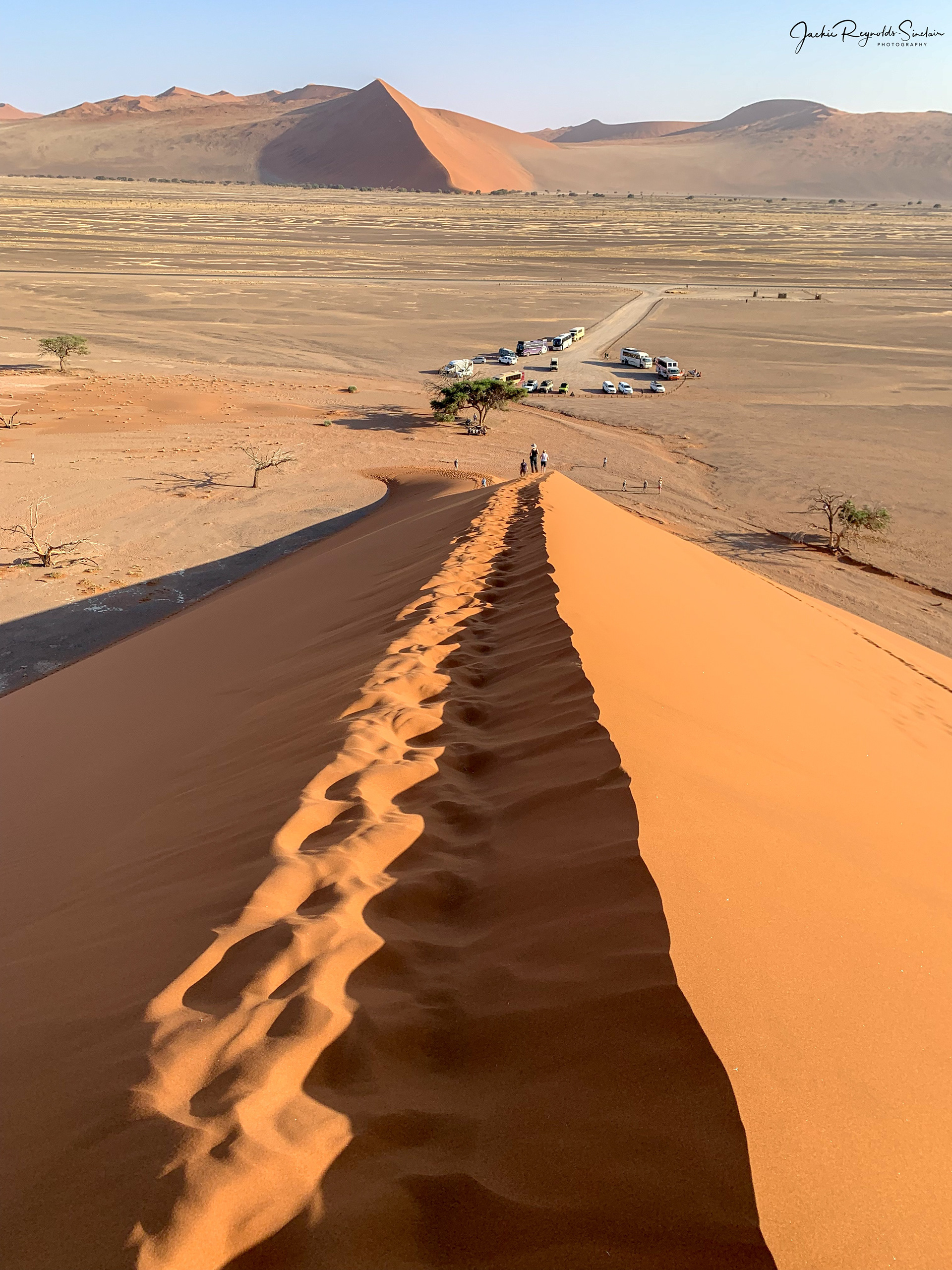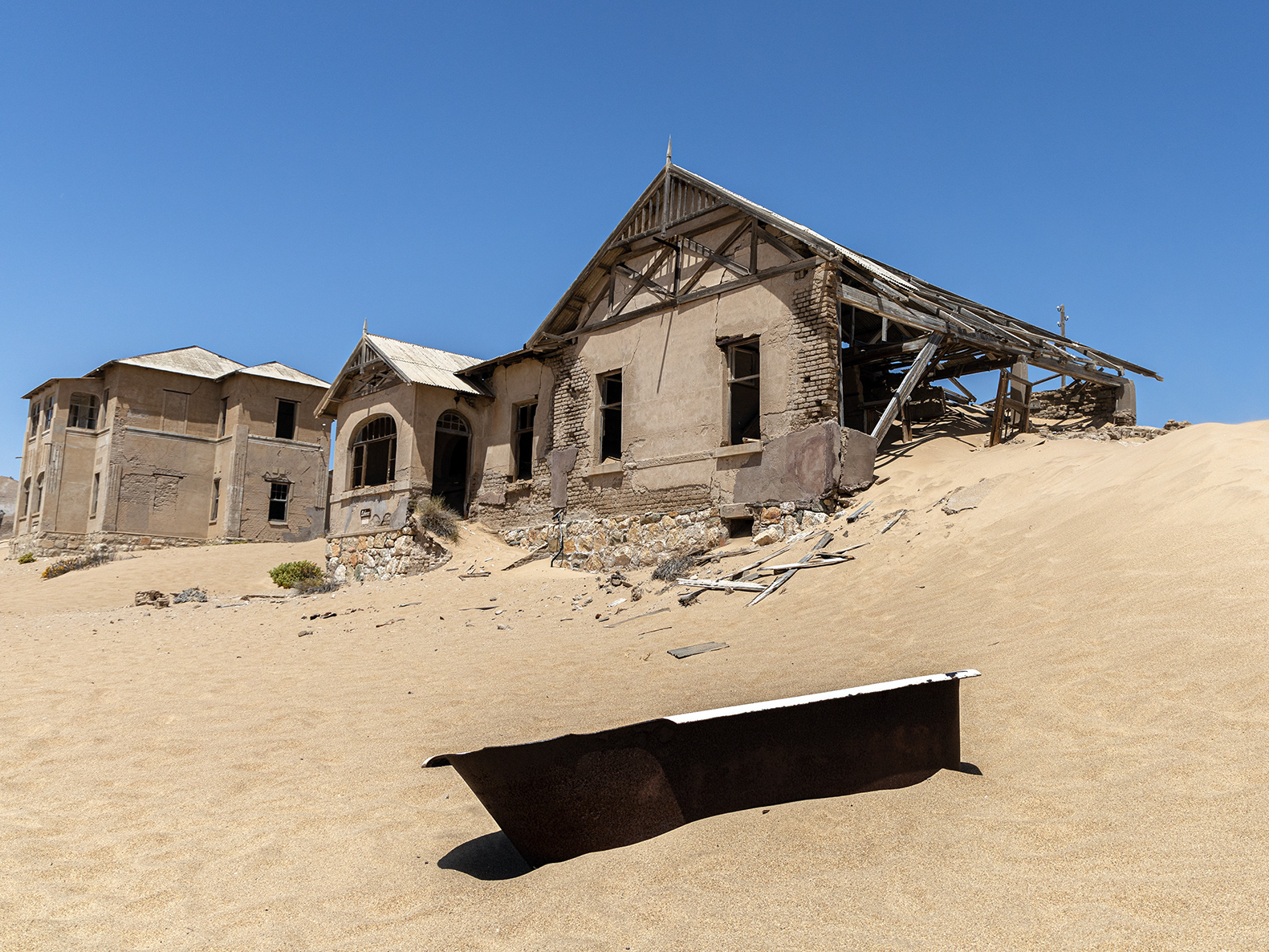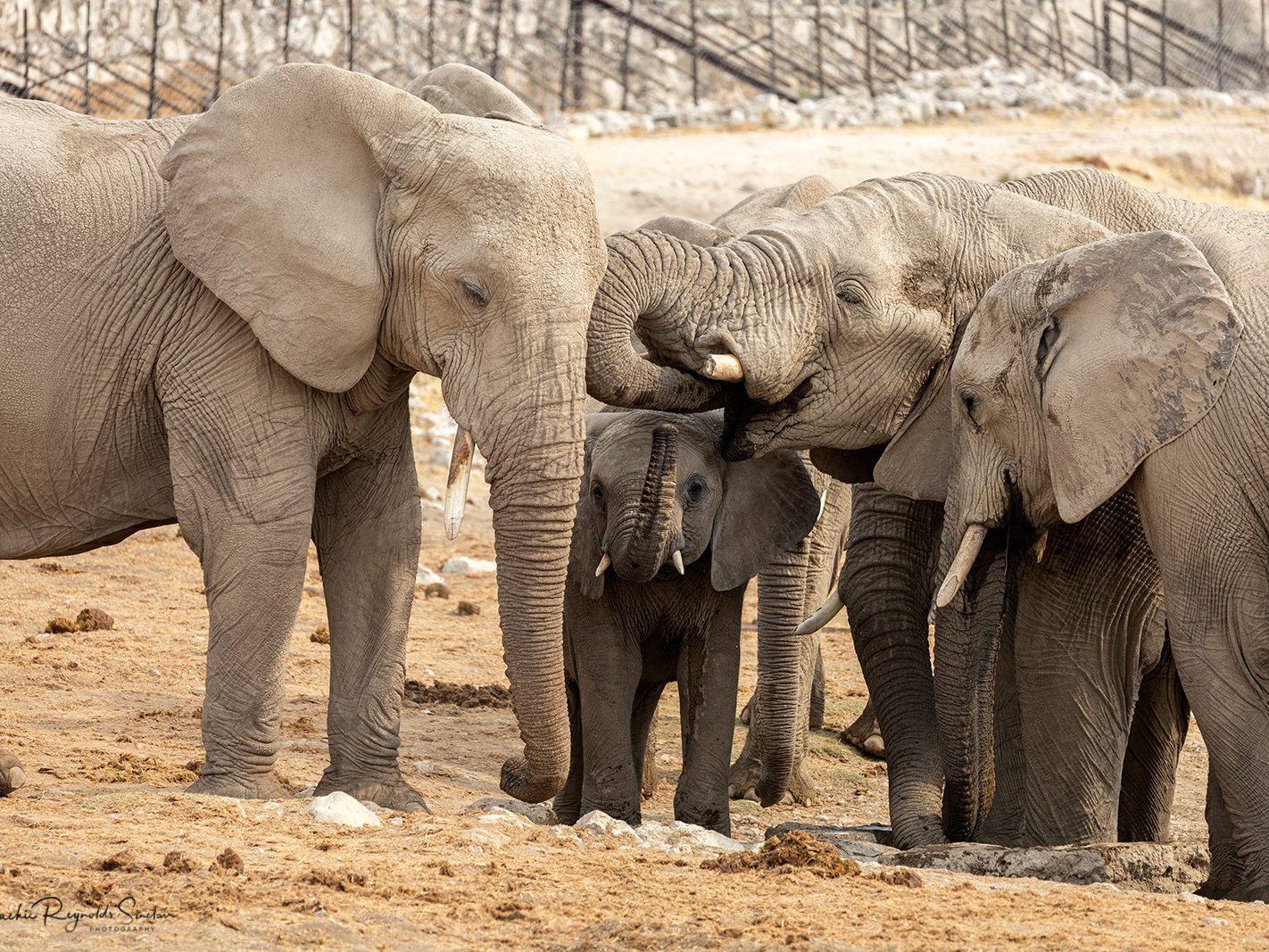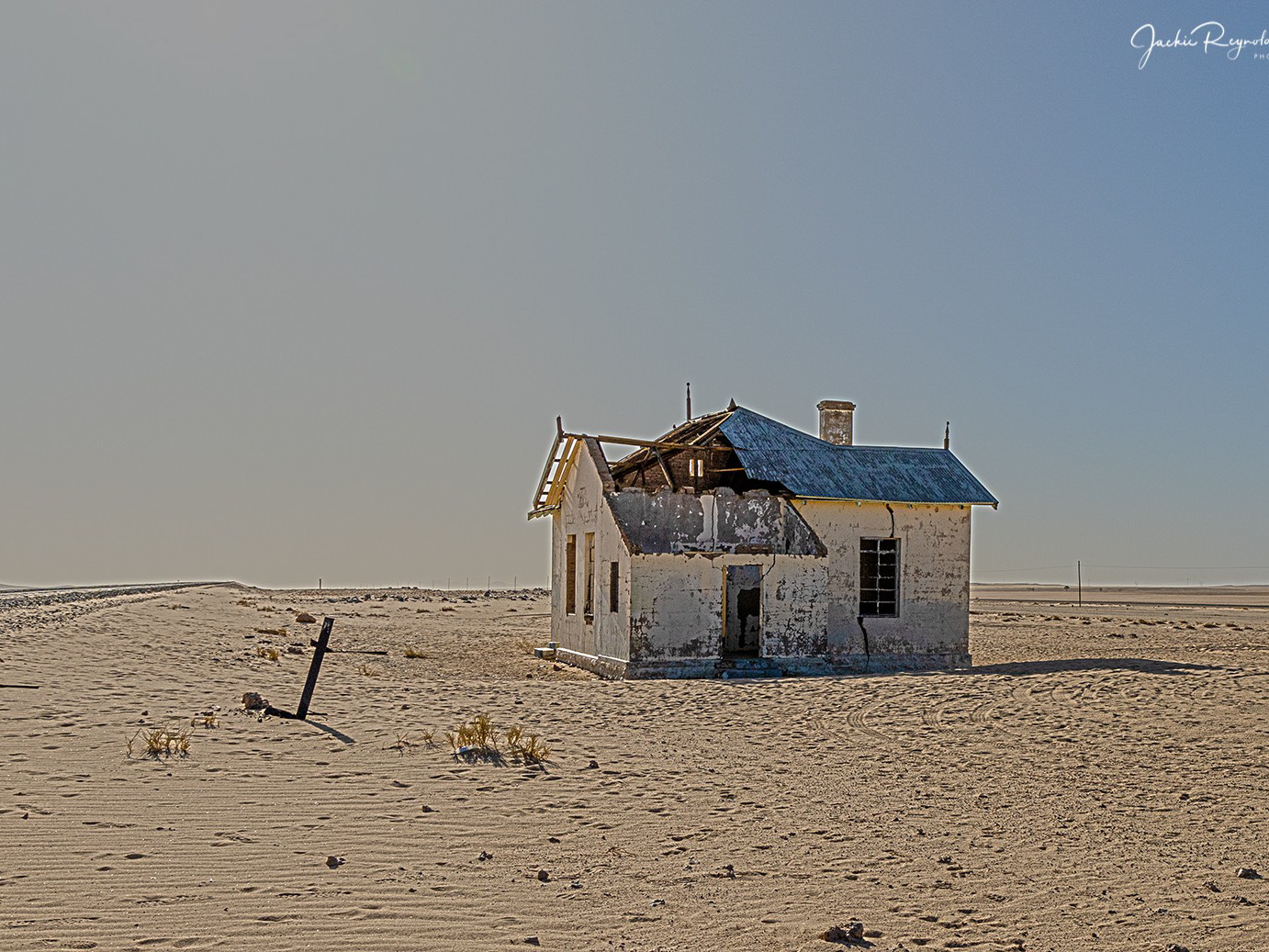Sossusvlei is a salt and clay pan situated in the Namib-Naukluft National Park.
The word Sossusvlei originates from two languages, Nama and Afrikaans. It literally translates to “dead-end” (from the Nama word “Sossus”) “marsh” (from the Afrikaans word “Vlei”) as it is the place where the dunes come together preventing the Tsauchab River to flow any further, some 60km east of the Atlantic Ocean. However, due to the dry conditions in the Namib Desert the river seldom flows this far and the pan remains bone-dry most years.
The dunes in this area are some of the highest in the world, reaching almost 400 metres.
Close to Sossusvlei, Deadvlei is a clay pan characterised by dark, dead camel thorn trees contrasted against the white pan floor. The pan was formed when the Tsauchab River flooded and the abundance of water allowed camel thorn trees to grow. However, the climate changed and the sand dunes encroached on the pan, blocking the river from reaching the area. The trees are estimated to be approximately 900 years old, however they have not decomposed due to the dry climate.
Dune 45 is named for its proximity to Sesrium Gate. It is situated 45km from the gate. Its fascinating shape and accessibility makes it the most photographed dune in the world. Visitors are allowed to climb Dune 45. The Dune is 85 meters high and the climb is well worth the effort for the incredible panoramic view of Dune Valley.
